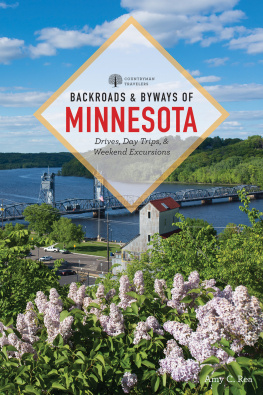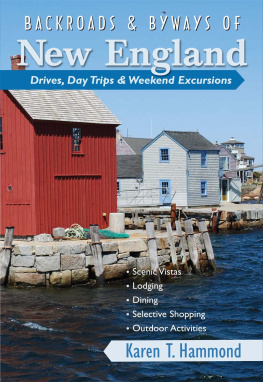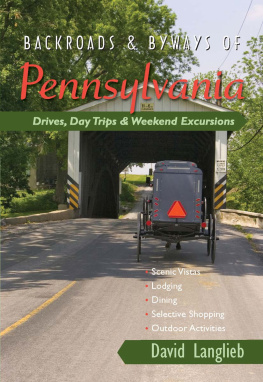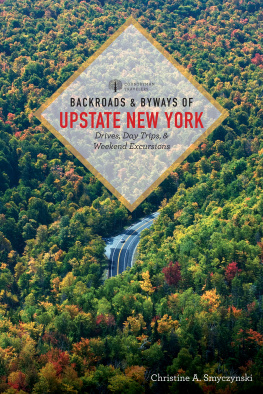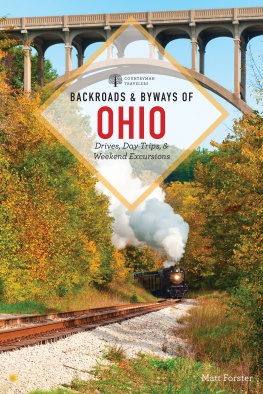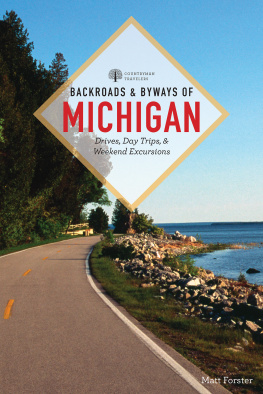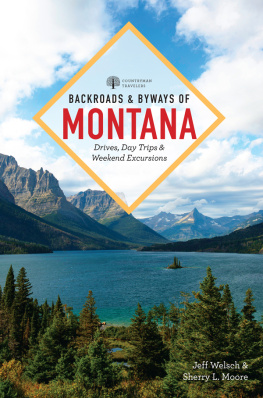Contents
Guide


We welcome your comments and suggestions.
Please contact:
Editor
The Countryman Press
500 Fifth Avenue
New York, NY 10110
or e-mail countrymanpress@wwnorton.com.
Copyright 2011, 2019 by The Countryman Press
Photo page 168: Shutterstock.com/John Brueske
Maps by Michael Borop (sitesatlas.com)
All rights reserved
For information about permission to reproduce selections from this book, write to
Permissions, The Countryman Press, 500 Fifth Avenue, New York, NY 10110
For information about special discounts for bulk purchases, please contact
W. W. Norton Special Sales at specialsales@wwnorton.com or 800-233-4830
Library of Congress Cataloging-in-Publication Data is available
The Countryman Press
www.countrymanpress.com
A division of W. W. Norton & Company, Inc.
500 Fifth Avenue, New York, NY 10110
www.wwnorton.com
978-1-68268-297-5 (pbk.)
978-1-68268-298-2 (ebk.)
In memory of my father, Ernie Crippen, who loved the state of Minnesota, helped build a good many roads across it, and was thrilled that his daughter had the opportunity to explore and write about this wonderful state.

Contents
W here to even begin? So many people, directly and indirectly, helped me with this project, and in some cases I dont even know their names. For example: the blond woman at the International Falls Visitor Center who took one look at mewhen Id been on the road for hours on a hot day and had just emerged from the detour from hellwagged her finger, and said, You look like you could use a view and a drink. Truer words were never spoken, and her recommendation that I head east out of International Falls and make my way to Sha Sha Resort was spot on. An hour later, I was on a sunny deck overlooking Rainy Lake, enjoying a walleye salad and a Summit beer, and the stress of the day was melting away. Whoever you are, friendly woman in International Fallsthank you.
Staff at visitor centers and chambers of commerce, servers in restaurants, clerks in stores and gas stations, other tourists on hiking trails, employees and volunteers at county and state historical society branches and sites, DNR personnel at state parks and online, my friends on Twitterwho not only encouraged me, but gave me tips and leads: these are just a few of the people who offered me insight and help when I most needed it.
And, of course, thanks to Jim and Mitchell and Michael, my very own family, who have put up with absences and long-winded dinnertime conversations about arcane Minnesota subjects. I love you all!

T he word Minnesota comes from a Dakota word meaning sky-tinted water, an appropriate name for the land of 10,000 lakesor more accurately, 15,000 lakes. With the Mississippi headwaters here, and the Minnesota and St. Croix Rivers flowing through its countryside, Minnesota is also a state of rushing rivers. The states terrain varies wildly: from rolling, swooping roads and bluffs along the rivers to the expansive prairies in the south and west to the dramatic, hilly vistas along the North Shore of Lake Superior, and the dense forests and wetlands of the northern part of the state. Most of the states lakes and rivers were formed from glacial drift thousands of years ago. The southeastern corner of the state, known as the Driftless Zone, is the one exception.
The states first inhabitants were the Anishinaabe and Dakota tribes. Later, the Sioux made their way into the state, as did the European traders known as voyageurs. Violence arising from tensions between Europeans and Native Americans is an ugly part of the states history, with its culmination in the Dakota War of 1862, which led to the largest mass execution of indigenous people in Minnesota history, along with the deaths of hundreds more. The War is remembered and documented throughout south-central Minnesota.
Logging and farming were the two primary occupations in the early settler years, followed closely by mining in the northeastern part of the state and tourism around the Brainerd Lakes area. Industrialization increased in Minnesota after World War II and resulted in population growth in larger city centers. Some rural towns, however, disappeared altogether, while others have found a way to, if not grow, remain stable enough to thrive.
This book takes you to many of those towns. These are villages and hamlets where you can find all manner of history preserved in small museums and community centers. Still, the biggest motivator for traveling outside the Twin Cities metropolitan area is, to put it mildly, to enjoy the view. Lakes and rivers, bogs and wetlands, dense old-growth forests, rolling hills full of trees and wildflowers, and wide-open prairies are all to be found within the states borders. Opportunities for outdoor recreation seem nearly endless: hiking, biking, canoeing, swimming, fishing, hunting, camping, geocaching, backpacking, snowshoeing, sledding, skating, downhill and cross-country skiing, skijoring, dogsledding, snowmobiling, ice fishing. Whatever the season, theres a way to enjoy the beauty Minnesota has to offer.
I truly loved researching this book. While the project was often exhausting, it was never dull. Every corner I turned, I seemed to find something new and exciting. Until youve spent time in greater Minnesota (as the area beyond the Twin Cities is known), you really havent begun to experience what the state has to offer.
YEAR-ROUND TRAVELS
As already noted, you can travel the state year-round and find plenty of things to do. However, winter outstate is a different beast than winter in the metro area. Theres no disputing how beautiful it can bemiles of untouched snow, trees covered in hoarfrost, brilliant blue skies, and exhilaratingly intense sunsets over frozen lakes. But if youre planning on traveling outstate, especially to the western part of the state, keep a close watch on the weather: in areas where there are wide-open spaces, particularly in the southwest, snowstorms can be windswept into zero visibility, and highways can sometimes be closed. Always travel with a winter safety kit in your car, which should include a fully charged cell phone, a flashlight and spare batteries, blankets (yes, multiple), a shovel, extra clothes in case you need to turn your car off, nonperishable snacks and bottled water, flares, rope, a knife of some sort, waterproof matches and candles, and a first-aid kit.
I dont mean to make traveling in winter in Minnesota sound like an especially dangerous or foolish thing to do. But use common senseif the weather forecaster is sounding apocalyptic, it might be a good idea to postpone your trip.
That said, summer is the peak time to visit many of these places, as travelers are drawn to warm, sunny days outdoors. In most areas, youll find some of the visitor attractions (museums, restaurants) have limited or seasonal hours. When planning your trip in the winter months, be sure to confirm which sites are open and when to avoid being disappointed.
One thing you can nearly always find open is a state park. Most of Minnesotas 70-plus state parks are open for at least some of the winter. And for good reason: winter recreation enthusiasts appreciate the opportunities to get out their cross-country skis or snowshoes and take in the natural beauty found in these parks. Many parks offer special winter activities and events, sometimes highlighting the areas history as viewed through a wintry lens.

